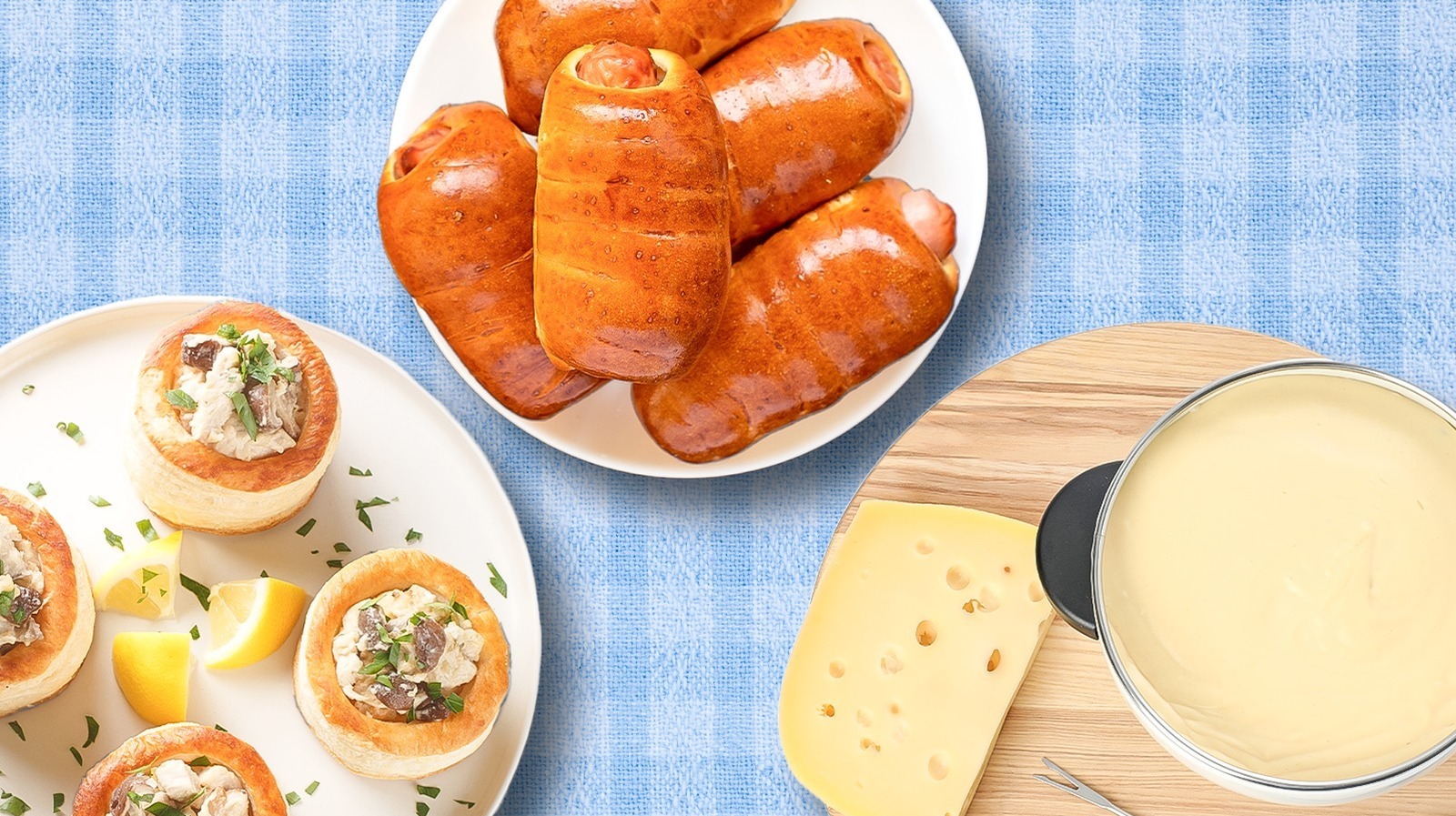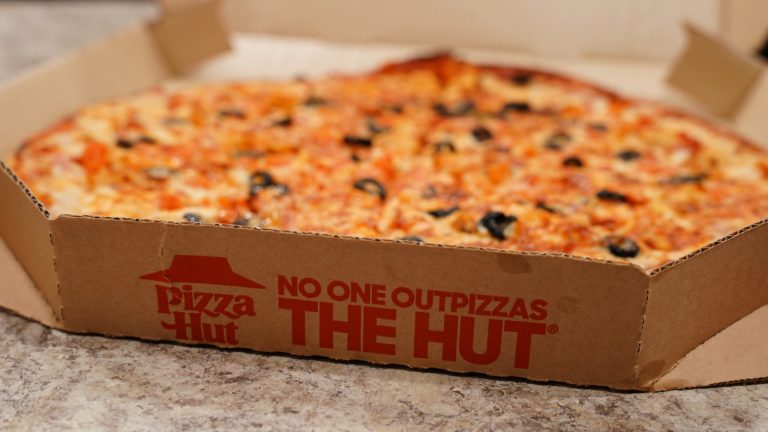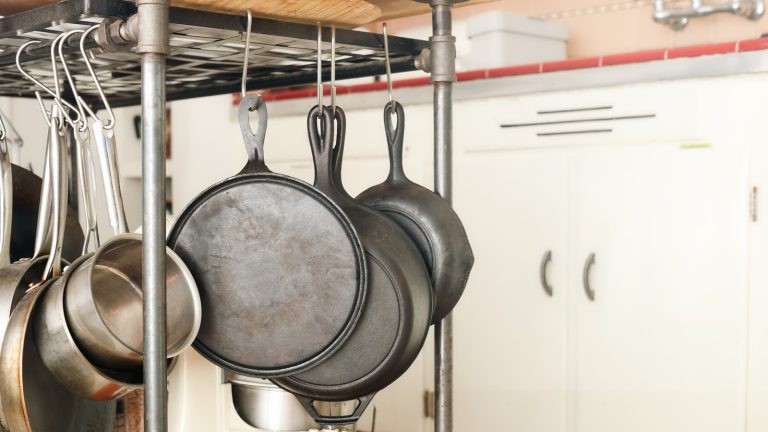The 1970s gave us shag carpeting, avocado-colored everything, and an unapologetically fearless approach to entertaining. Cocktail parties were all the rage, and they typically featured appetizer spreads that were colorful, creative, and perhaps somewhat questionable by today’s standards. Coffee tables could be lined with grape jelly meatballs on toothpicks, fondue pots bubbled away in the center of the room, and Jell-O salads were considered an elegant touch. Presentation was everything, and no one blinked at skewers stuck into pineapples or cream cheese rolled in crushed nuts.
Today, many of those once-stylish appetizers have disappeared from the party circuit. Changing tastes, health trends, and a move away from processed foods have pushed many of these dishes into obscurity. Fish-shaped seafood mousse may never make a comeback, but there’s still something fascinating about party foods from that era. For those who love retro food trends, these appetizers have an odd charm. If you’re feeling nostalgic for a time when a cocktail weenie could count as sophisticated and shrimp in aspic was a showstopper, these old-school appetizers from the 1970s will be right up your alley.
Cheese balls
In the 1970s, no party spread was complete without at least one cheese ball rolled in chopped nuts and served with crackers on the side. Cheese balls were nothing new at the time, but they did hit peak popularity during the decade. Legend has it that the first ever cheese ball was created in Cheshire, Massachusetts, in 1801. The townspeople wanted to create a gift for President Thomas Jefferson, so they brought hundreds of gallons of milk to Elisha Brown Jr.’s farm, where a massive 1,235-pound cheese ball was created and presented to the White House.
Cheese balls in the ’70s typically featured cream cheese mixed with some sort of shredded cheese (cheddar was popular). The mixture was shaped into a ball, chilled, then rolled in crunchy nuts. Often, other ingredients were added like garlic powder, Worcestershire sauce, hot sauce, pineapple, and chopped dried beef. It’s easy to see why cheese balls were so popular. They’re easy to make ahead and incredibly adaptable. If you want to put a modern twist on this retro dish, you can get creative by swapping in different cheeses and playing around with flavor combos. Take, for example, this loaded baked potato cheese ball recipe.
Pigs in a blanket
If there was one appetizer at a 1970s party that was adored by adults and kids alike, it was pigs in a blanket. These tasty treats feature a mini hot dog or cocktail sausage wrapped in pastry, then baked and served with ketchup and mustard on the side. Cheap, easy to make, and bite-sized, these porky snacks were ubiquitous at potlucks, kids’ birthday parties, and cocktail parties. In fact, they were so popular that they were served at school cafeterias throughout the decade.
Pigs in a blanket were around for decades prior to the ’70s, but many believe they really took off after a recipe for the dish was published in a 1957 Betty Crocker cookbook. Some believe that the dish is a relative of the British sausage roll, while others say it may be a twist on similar dishes from Asia and other parts of Europe. Today, there are plenty of variations around the world. For example, the British wrap their pigs in a blanket with bacon instead of pastry. The Germans sometimes add cheese to their “würstchen im schlafrock” (sausage in a dressing gown). In Mexico, salchitacos are sausages wrapped in tortillas and cut into bite-sized pieces.
Gelatin salads
Diners today might balk at the idea of tucking into a jiggly gelatin-based salad sporting suspended pieces of meat, seafood, and vegetables. However, Jell-O salads were wildly popular appetizers in the 1970s. You could find them in all sorts of forms, like domes, rings, and animal shapes. They also came filled with whatever you could pack into them. Think lettuce, carrots, tuna, Spam, mayonnaise, and cottage cheese. Some of the combos were downright odd, like one vintage Jell-O appetizer recipe that featured lime Jell-O, pimento-stuffed green olives, and sweet pickle slices.
Interestingly, gelatin salads were popular long before the 1970s. Prior to the 20th century, gelatin-based dishes were considered the height of luxury because the process of extracting collagen from animal bones (which is what gelatin is made of) was incredibly labor-intensive, so only the wealthy had the time and money to hire kitchen staff to do it. When Jell-O was invented in 1897, it offered home cooks a quick and easy way to make gelatin dishes with an instant mix. Jell-O salads really took off in the 1930s and remained popular all the way through to the 1980s, when savory Jell-O dishes fell out of fashion.
Cheese fondue
Few party foods captured the communal spirit of the 1970s quite like fondue. The Swiss dish made a splash in the U.S. when it was served at the World’s Fair in New York in 1964, and it wasn’t long before hip hosts were inviting friends over for fondue parties. Part of the fun was gathering around the pot set over a burner and dipping hunks of bread on long fondue forks into bubbling melted Gruyere or Emmental cheese spiked with wine. And if the host decided to go full-on with the fondue theme, the following courses could include meat cooked in hot oil and chocolate fondue for dessert.
Some say that fondue exploded in popularity in the ’70s because the Swiss Cheese Union went to town with ad campaigns promoting the dish so that it could sell more Swiss cheeses. Eventually, though, fondue (and the Swiss Cheese Union) faded from the spotlight. Sure, the dish is hands-on and interactive, but it’s also equipment-heavy and not exactly easy to clean up. That being said, it hasn’t entirely gone away. Today, fondue shows up at retro-themed parties or the occasional restaurant, and modern takes like queso-style dips or lighter broths have given it some fresh life.
Shrimp cocktails
It would be rare to rock up to a 1970s dinner party and not be served shrimp cocktail. A classic shrimp cocktail features cooked shrimp with the tails left on, but no shells. The shrimp are usually served in a glass with a tangy cocktail sauce that features ingredients like ketchup, Worcestershire sauce, horseradish, and hot sauce. Some shrimp cocktails also have lettuce in the glass (usually just for show) and lemons for squeezing over the shrimp.
The origins of the shrimp cocktail can be traced back to San Francisco in the mid-1800s. The story goes that a gold miner visited a bar to celebrate a big find with a glass of whisky and some oysters. After downing the whisky, he poured the oysters into the glass and dressed them with horseradish, ketchup, Worcestershire sauce, and vinegar. He called it an oyster cocktail, and the dish took off. During Prohibition, restaurants repurposed their cocktail glasses by serving seafood cocktails in them, and that’s how the dish got its signature look. By the middle of the 20th century, shrimp was the go-to choice for the cocktail, and it quickly became a staple of elegant entertaining.
Rumaki
One of the more eccentric vintage appetizers popular in the 1970s was rumaki. The dish features chicken livers and water chestnuts marinated in soy sauce and brown sugar, then wrapped in bacon, secured with a toothpick, and broiled until the liver is cooked through and the bacon is brown and crisped up. The result is a bite–sized appetizer that’s crispy on the outside, crunchy and velvety on the inside, and bursting with sweet, salty, earthy, and umami flavors.
Some sources will tell you that rumaki is a Polynesian dish, but it was actually created in the United States around the time that tiki culture was taking over. The first known record of the dish is from a 1941 menu for a restaurant in Palm Springs, California, called Don the Beachcomber. The dish later appeared on the menu at Trader Vic’s, and that helped increase its popularity throughout the 1950s and through to the ’70s. You can find several variations of rumaki today, including many without liver for those who are squeamish about organ meat. However, many purists will tell you that the chicken liver is what really makes the dish.
Cheese and pineapple hedgehogs
Nothing said “party” in the 1970s quite like a foil-covered grapefruit bristling with toothpicks. Cheese and pineapple hedgehogs were a go-to appetizer for hosts who wanted something eye-catching but easy to assemble. The basic idea was simple: cubes of cheddar and chunks of canned pineapple skewered onto toothpicks and stuck into a round base like half an orange, grapefruit, or melon. The final result is a dish shaped like a hedgehog or porcupine, and many hosts played that up by adding glacé cherries or olives for the eyes and nose.
It’s hard to find any details on when exactly the cheese and pineapple hedgehog came to be or who created it, but it was wildly popular in the U.K. in the ’70s and ’80s and made its way from there to other parts of the world. There were a few things about the appetizer that spoke to ’70s sensibilities. For one, it fit the bill for the playful presentation that was popular with so many appetizers of that time. In addition, it could easily be adapted to include different fruit, cheeses, and even savory elements like olives and ham.
Cocktail meatballs
Sticky, sweet, and just a little bit mysterious, cocktail meatballs were a staple at many dinner parties in the 1970s. The most famous version called for a sauce made from equal parts grape jelly and chili sauce. The sauce coats the meatballs, creating a glossy glaze. It sounds strange, but the tangy-sweet combo somehow works. The meatballs can be pre-made and simmered in a slow cooker, making them an easy option for hosts who want something hot and relatively hands-off to make. Be sure to skewer them with toothpicks for easy grabbing.
Another popular spin on the meatball appetizer was Hawaiian meatballs. The dish typically features meatballs with canned pineapple chunks and bell peppers in a sweet-and-sour sauce that often includes brown sugar, vinegar, and soy sauce. The meatballs can also be made in a slow cooker or crockpot with the sauce. Like rumaki, these sweet and tangy meatballs played into the era’s fascination with tropical flavors. Cocktail meatballs ticked all the right boxes for a ’70s party appetizer, including inexpensive ingredients, big flavors, and minimal effort.
Fish-shaped seafood mousse
There was a time when the height of dinner party sophistication was a seafood mousse shaped like a fish (with cucumber scales and olive eyes, of course). The mousse was often served on a platter with crackers or bread on the side, and it functioned as both a centerpiece and a dip. It was meant to be something elegant and showy that you brought out to impress guests, although today, many might call it terrifying.
The fish-shaped mousse of the ’70s was typically made with canned fish like tuna or salmon that was blended with mayonnaise, whipped cream, or sour cream to create a smooth texture. Unflavored gelatin was often used to help it hold its shape. Lemon juice was a common addition, along with seasonings like chopped or dried herbs. Some recipes called for interesting add-ins like Thousand Island dressing or A1 steak sauce. Once the mixture was blended, it was poured into a fish-shaped mold and chilled until set. Then, the mousse was flipped onto a plate and garnished with ingredients like sliced radishes, cucumbers, pimento-filled olives, and pimento strips.
Cheese straws
Imagine if you could combine cheese and crackers into one amazing dish? That’s pretty much what you get with cheese straws, tasty snacks that were often served as appetizers at ’70s parties. Cheese straws actually date back to the 19th century, as evidenced by several recipes from that time outlining how to make the snacks. They became especially popular during the 1970s, when finger foods and make-ahead appetizers were in high demand. Easy to bake, easy to serve, and packed with flavor, cheese straws are the kind of snack you can pile in a bowl and watch disappear fast.
Cheese straws are typically made from a simple dough of flour, butter, shredded cheese (usually sharp cheddar), and a bit of salt or cayenne pepper for a kick. The dough is rolled out, cut into strips, and baked in the oven until the strips turn crisp, golden, and flaky — almost like a savory shortbread. Some versions use puff pastry for extra lightness, while others add spices like paprika or garlic powder for more flavor. However they’re made, cheese straws are one of those low-effort, high-reward appetizers that definitely deserve a comeback at dinner parties.
Vol-au-vents
In the 1970s, no canapé looked more impressive than a vol-au-vent, a golden puff pastry shell filled with something creamy, savory, and rich. Never mind that the filling might have come out of a can, because that flaky pastry was able to hide a lot of sins. The appetizers were particularly popular in the U.K. and common fillings included creamy chicken and mushrooms, beef bourguignon, and prawns in Marie Rose sauce (a mix of mayo, ketchup, Worcestershire sauce, lemon juice, and hot sauce).
Vol-au-vents were created in France around the late 1700s. The name translates to “flying in the wind,” which refers to the lightness of the crispy puff pastry. The pastry cup is made by cutting out discs of puff pastry, one of which has a hole cut out to create a ring. Then they’re sealed together with egg wash and baked until they puff up into little cups. You can fill them with whatever you like, or go all out with a classic French filling like sauce financière, which consists of ham, mushrooms, thyme, and Madeira wine.
Clam dip
Chips and dip have always been a solid party offering, but one dip in particular took the 1970s by storm. Clam dip was wildly popular in the ’60s and ’70s, but for some reason, it seems to have faded into the background, and we’re not sure why. It’s a pretty easy appetizer to make, as all you need to do is chop up some canned clams and mix them with softened cream cheese or sour cream, lemon juice, and a few dashes of Worcestershire sauce. Some people also like to add a splash of hot sauce or some minced onion or garlic for extra flavor.
While clam dip was an essential appetizer at many ’70s parties, it wasn’t always the only dip on the table. Many dips from that time were easy creations that could be whipped up using pantry staples that came in packets, tubs, or cans. Hot crab dip was another popular appetizer that typically consisted of canned crab meat, cream cheese, milk, and horseradish mixed together and baked in a pie plate in the oven. And who could forget French onion dip, made by stirring a packet of dry soup mix into sour cream?
Cocktail weiners
Cocktail wieners go by many names, including little smokies, Vienna sausages, and mini hot dogs. Regardless of what they were called, there was hardly a 1970s party that didn’t feature some form of cocktail wiener among the appetizer spread. They could be served plain with just a toothpick, wrapped in pastry à la pigs in a blanket, or simmered in a crockpot with a sweet and tangy sauce. Sometimes they were served directly out of the crockpot they were cooked in to keep them warm.
One of the most common sauces for ’70s-style cocktail wieners was a simple barbecue sauce that could be store-bought or made from scratch with ingredients like ketchup, vinegar, brown sugar, onion, and Worcestershire sauce. Some sauces included cheeky additions like a splash of bourbon to add more depth. Some hosts also took a note from cocktail meatball sauce and combined grape jelly with chili sauce to give the wieners a tangy glaze. These sauces work well because the sweet and tart elements pair well with the smokiness of the meat and help cut through the fattiness.
Hanky pankies
Party ryes were big in the 1970s, and for good reason. They’re basically mini pizzas on small squares of rye bread that are highly customizable, easy to prepare ahead of time, and work great as finger foods that party guests can grab and snack on. One particularly popular style of party rye was a creation called the hanky panky. There’s no definitive answer as to how the appetizer got its name, and it also goes by other names like party pizza ryes, Polish mistakes, and sausage breads. Despite the different nomenclature, the ingredients are pretty standard across the board.
A classic recipe for hanky pankies involves cooking ground beef and ground sausage until browned, then stirring in Velveeta cheese, Worcestershire sauce, garlic salt, and oregano. The gooey, meaty mixture is scooped onto slices of rye party bread and then broiled until piping hot and bubbly. If you want to get fancy with them, you can add extra ingredients like diced onion or bell peppers. Either way, what you get is a tasty snack that’s salty, cheesy, a little greasy, and just about perfect with a cold drink.





